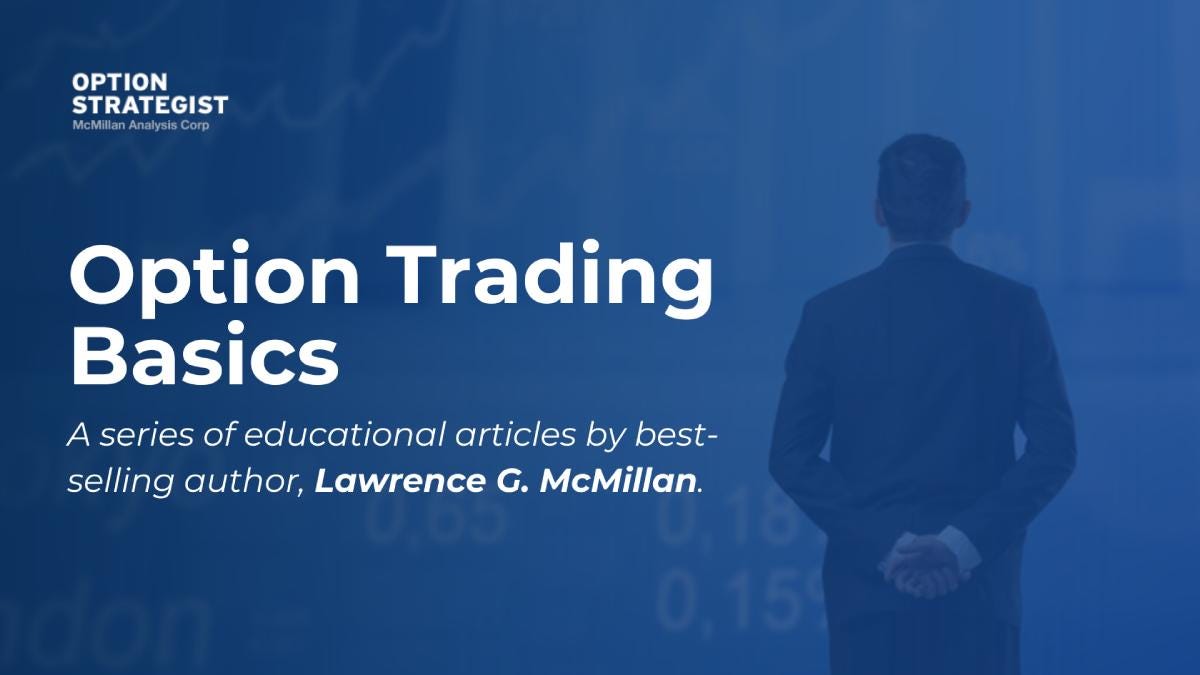Option Basics: Option Definition and Terms
Every option contract is defined by a few simple terms. Learn the meaning of underlyings, strikes, expirations, and premiums, the core building blocks of options trading.
In a previous article, “Option Basics: What are options and why trade them?”, we introduced the concept of options and explored why they’re such a powerful tool for investors. In this follow-up, we’ll take the next step and build a solid foundation by defining the key terms you need to know. We’ll cover the different types of underlying instruments—stocks, indices, and futures—before breaking down essential option concepts like type, strike price, expiration date, and premium. By the end, you’ll have the vocabulary and framework to understand exactly what an option contract represents and how it’s priced.
Underlying Instruments
Let's begin with the definitions of the simplest terms, as a means of establishing the basic building blocks. Before even getting into what an option is, we should have some idea of the kinds of things that have options. That is, what are the underlying instruments that provide the ground work for the various listed derivative securities (options, warrants, etc.)? The simplest underlying instrument is common stock. Options that give the investor the right to buy or sell common stock are called stock options or equity options.
Another very popular type of underlying instrument is an index. An index is created when prices of a group of financial instruments—stocks, for example—are grouped together and “averaged" in some manner so that the resulting number is an index that supposedly is representative of how that particular group of financial instruments is performing. The best known index is the Dow-Jones Industrial Average, but there are indices of many other groups of stocks; indices with a large number of stocks in them are the S&P 500 and the Value Line Index, for example. There are also many stock indices that track various groups of stocks that are in the same industry: Utility Index, Oil Index, Gold and Silver Index, for example. There are even indices on foreign stock markets, but they have options listed in the United States; these include the Japan Index, Hong Kong Index, and Mexico Index, as well as several others. Indices are not restricted to stocks, however. There are indices of commodities, such as the Commodity Research Bureau Index. Moreover, there are indices of bonds and rates; these include such things as the Short-Term Rate Index, the Muni Bond Index, and the 30-Year Bond Rate Index. Options on these indices are called index options.
Finally, the third broad category of underlying instrument is futures. This is probably the least understood type of underlying instrument, but as you will see when we get into strategies, futures options are extremely useful and very important. Some people mistakenly think options and futures are nearly the same thing. Nothing could be further from the truth. The "dry “definition is a futures contract is a standardized contract calling for the delivery of a specified quantity of a certain commodity, or delivery of cash, at some future time. In reality, owning a futures contract is very much like owning stock, except that the futures' price is related to the cash price of the underlying commodity, and the futures contract has a fixed expiration date. Thus, futures contracts can climb in price infinitely, just as stocks can, and they could theoretically trade all the way down to zero, just as stocks can. Moreover, futures can generally be traded on very small percentages of margin, so that the risk of owning futures is quite large, as are the potential rewards. We discuss futures contracts in more detail later, but this brief description should suffice to lay the groundwork for the following discussion of options terms. As might be suspected, options on futures contracts are called futures options.
Option Terms
As stated earlier, an option is the right to buy or sell a particular underlying security at a specific price, and that right is only good for a certain period of time. The specific items in that definition of an option are as follows:
Keep reading with a 7-day free trial
Subscribe to The Option Strategist Substack to keep reading this post and get 7 days of free access to the full post archives.


